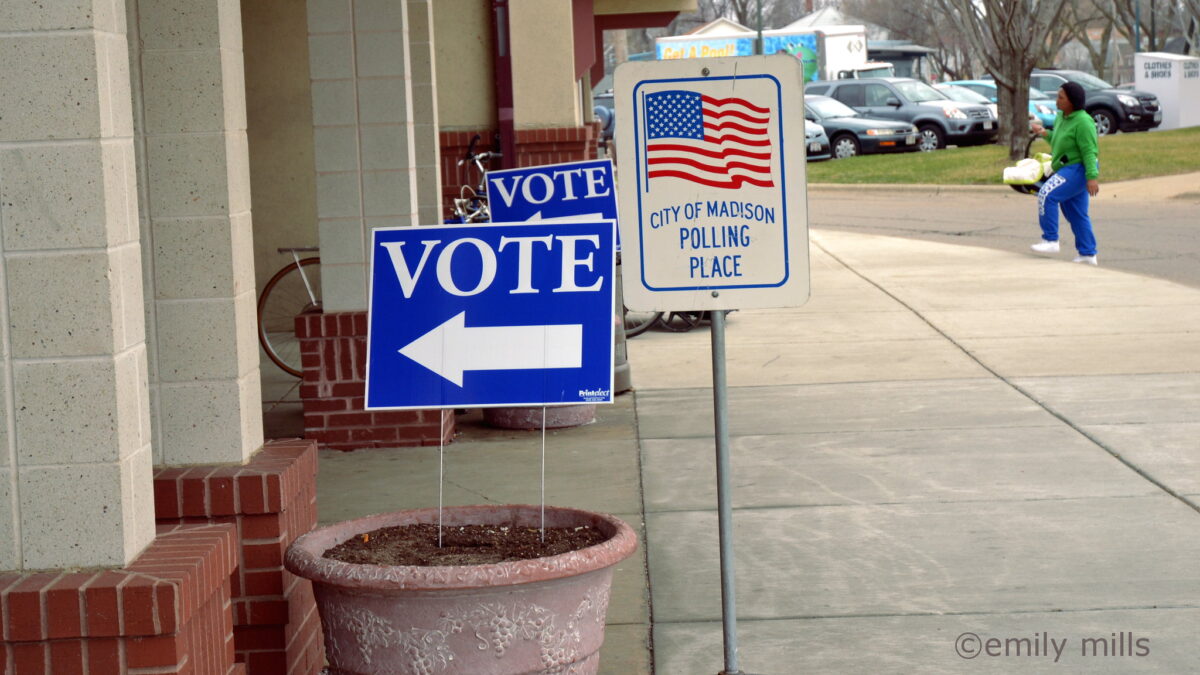Since 2014, leftist political map makers have relied on a funky formula to argue the existence of partisan gerrymandering. A new report from the Wisconsin Institute for Law and Liberty (WILL) breaks down the inherent flaws in the so-called “efficiency gap.”
“The efficiency gap measure has been used primarily by liberals in a number of states like Wisconsin, Pennsylvania, and North Carolina to make the gerrymandering argument in current political map lawsuits. They believe it is the be-all and end-all of gerrymandering tests. We have determined it cannot be,” explains Will Flanders, research director at the Milwaukee-based conservative law firm.
Flanders and WILL’s Noah Diekemper are authors of “Behind the Lines: Investigating the Efficiency Gap in Redistricting Cases,” exclusively provided to The Federalist. The report lays out several problems undercutting the unquestioned faith the left and the accomplice media have placed in the formula.
‘A Single Tidy Number’
The efficiency gap is the brainchild of legal scholar Nicholas Stephanopoulos and political scientist Eric McGhee. In 2014, the academics published a paper that introduced “a new measure of partisan symmetry.” The efficiency gap formula, as defined by its creators, is the “difference between the parties’ respective wasted votes in an election, divided by the total number of votes cast.”
“It captures, in a single tidy number, all of the packing and cracking decisions that go into a district plan,” the authors boasted.
University of Michigan political scientist Jowei Chen, considered an unimpeachable election maps expert in left-wing circles, has lent the metric considerable currency in several court cases, including challenges to Wisconsin’s maps. Chen is the left’s go-to scientist on redistricting.
According to the “efficiency gap” approach, gerrymandering occurs “when a party ‘wins a lot of districts by a little,’ while their opponents win only a few districts by a lot,” the WILL report explains.
For the history buffs, the term was derived from Founding Father Elbridge Gerry, the governor of Massachusetts who signed the 1812 bill creating the odd, salamander-looking political maps that gave his fellow Democratic-Republicans more favorable boundaries — and expanded their power.
Some 200 years later, 2014’s novel efficiency gap attempts to provide a kind of definitive number to show when redistricting maps give an outsized political advantage to a party. The metric measures the so-called “wasted” vote.
WILL’s report includes a simple explanation of what a “wasted vote” is. If one party received 60 of 100 total votes and another party received 40, the latter party would have counted 40 wasted votes because it lost the election. The votes were spent on a losing candidate. The party receiving 60 votes would have recorded nine wasted votes since only 51 votes were needed to win the election.
The efficiency gap looks at the difference in each party’s total wasted votes over all the districts in a state, the report notes.
Where the Voters Are
One of the many problems with the efficiency gap is that it fails to sufficiently take into account political geography. WILL’s report notes what should be abundantly clear: that the modern political divide falls along urban and rural lines. “Democrat voters tend to be more concentrated in urban and (increasingly) suburban areas,” the report explains, while rural America tends to be populated by Republicans.
In Wisconsin’s 2022 election, while Republican candidate for governor Tim Michels won a majority of counties, incumbent Democrat Gov. Tony Evers won because he “ran up the margins” in the Badger State’s more heavily populated areas. In deep blue Dane County, which includes capital city Madison, Evers hauled in a whopping 79 percent of the nearly 300,000 votes cast. Michels failed to generate enough support from Wisconsin’s conservative-dominated rural areas to make up for the urban turnout.
Flanders said leftist legal challenges don’t often include the geopolitical arguments when talking about large efficiency gaps, and corporate media quickly gloss over the topic.
The efficiency gap also runs into trouble thanks to the Voting Rights Act, which demands the creation of some districts with a majority of racial-minority residents. It’s “designed to protect the ability of members of minority groups to elect members from similar ethnic backgrounds and to ensure that racial minorities are not shut out of political power,” WILL’s report states.
Because the districts are generally home to significant majorities of minorities, the large numbers often result in “wasted” votes, typically for Democrats.
Evers and the Wisconsin Supreme Court ran afoul of the Voting Rights Act in March 2022, when the U.S. Supreme Court rejected maps drawn up by the left-wing governor’s phony People’s Maps Commission. The 7-2 ruling found the state court erred in signing off on the maps and their invention of a seventh black-majority district — up from six.
WILL joined the Wisconsin legislature in appealing the implementation of Evers’ maps to the Supreme Court. The law firm argued the maps were a “racial gerrymander with the goal of ‘spreading’ black voters among several legislative districts seeking a bare majority in each.”
At the same time, the majority-minority districts created in compliance with the VRA drive up the efficiency gap’s number of wasted votes, contributing to a flawed picture of gerrymandering.
Defenders of the metric also shake off criticism about how the efficiency gap treats uncontested races. Where one party or another fails to field a candidate in a race, efficiency gap adherents simply impute numbers — or “guesstimate” how many votes the party would have received if it had run a candidate. That’s an imprecise measure, at best.
“In one analysis of the 2012 election maps in Wisconsin, two different imputation methods led to a variation of the efficiency gap from 9.0% to 13.85%,” the WILL study reports.
What’s in a Number?
The efficiency gap revolves around an arbitrary number: 7 percent. As WILL’s report points out, many court cases have argued that an efficiency gap greater than 7 percent should be the point of recognizable gerrymandering. But what does that mean? The authors assert that “there is no clear reason why this number is preferable to 6.0% or 10%. It’s a rule of thumb.”
Yet, leftist map makers in swing state Wisconsin are using this imprecise metric to argue for maps that would give Democrats an electoral advantage. The Wisconsin Supreme Court, with a left-leaning majority for the first time in 15 years, last month tossed out Republican-drawn maps and more than likely will pick a redistricting plan when Evers and the GOP-controlled legislature fail to come to terms.
Meanwhile, Democrats, looking for political advantage, will continue to roll out the problematic efficiency gap as gospel and claim to identify Republican-led gerrymandering around every corner.
WILL’s report likens the measure to the body mass index: “it’s a statistical measure you can calculate that does provide some information about a person in the form of one clean number, but that cannot be relied upon as a definition of health or even of healthy weight.”
“The bottom line,” the report continues, “is that the efficiency gap cannot be used as a tool to disqualify maps on the grounds of gerrymandering. “







